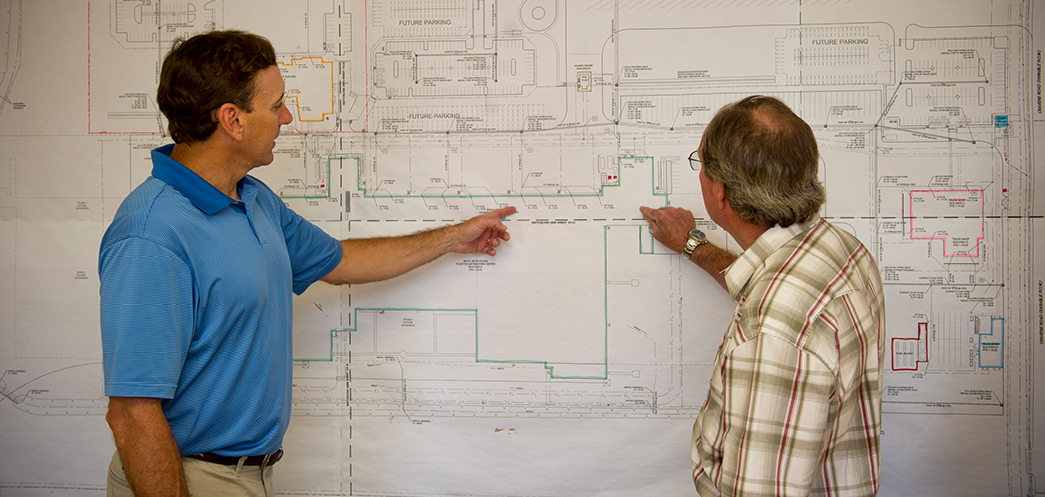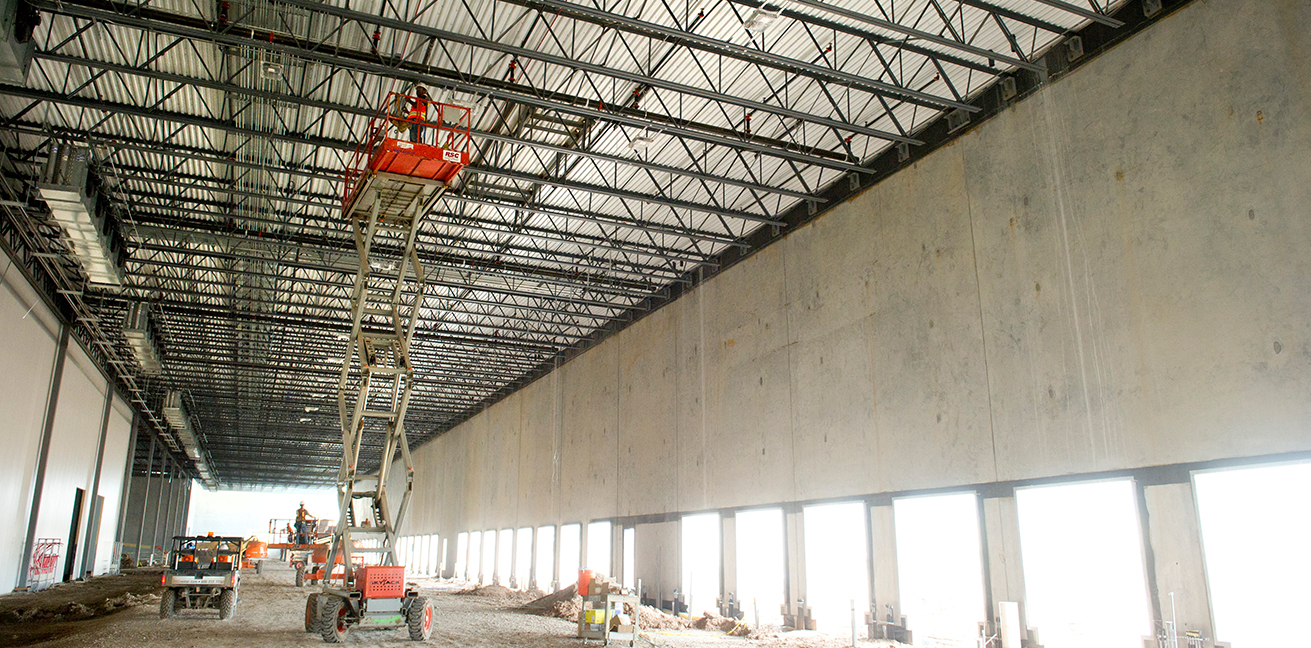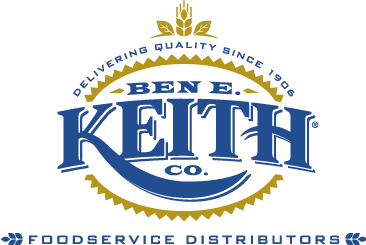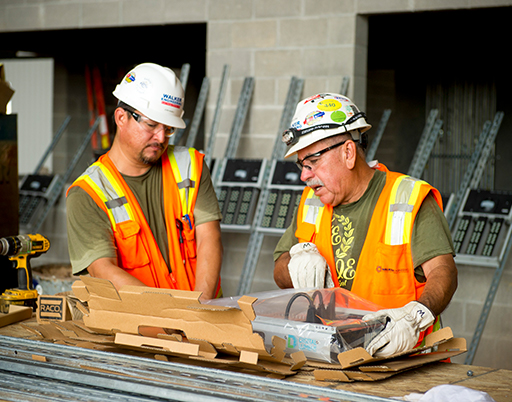Customer: Ben E. Keith Foods
Location: Missouri City, TX
Facility Size: 475,000 ft2
Operational Schedule: 24 x 7
Environment: Cold Storage Warehouse
Temperature Range: To -40ºF (-40 ºC)
Installation: New Construction
Savings: 90% energy
Showcase Facility Incorporates Energy Efficiency Innovations in all Aspects of its Design
Headquartered in Fort Worth, Texas, Ben E. Keith Foods is the nation’s eighth largest broadline foodservice distributor and one of the world’s largest independent distributors of Anheuser-Busch products. The company operates six distribution centers distributing in eleven southwestern states, serving customers that range from white tablecloth and casual dining restaurants, to hotels, schools, healthcare facilities and other institutional businesses. Offering more than 20,000 national and exclusive “house” brands in all broadline categories, Ben E. Keith consistently leads the market through customer-centric innovation and an unwavering focus on operational excellence.
To support rapid growth in the southeastern Texas region, the company is in the process of building a new 475,000-square foot distribution center on an 82-acre site in the Houston metro area. Expected to be operational by 2013, the new facility incorporates best practice solutions in all aspects of its design and highlights.
The design of the new facility highlights Ben E. Keith’s company-wide commitment to sustainability and energy efficiency. They range from an underground water retention pond for cooling the refrigeration system, to specialized cold dock loading areas and crane-operated aisles, to an ultra-efficient, LED-based “smart” lighting system from Digital Lumens.

Solving Decades-Old Lighting Challenges
Familiar with the impacts on facility budgets and refrigeration loads, the Ben E. Keith management team was determined to find a lighting solution for its new distribution center that was significantly more flexible and efficient than the traditional lighting currently deployed in other company facilities. A solution that, for safety and productivity reasons, would also deliver higher-quality light levels to facilitate its 24 x 7 warehousing operations.
After a rigorous evaluation of all options, the team found that solution in the LED-based Intelligent Lighting System from Digital Lumens. Rather than simply offering incremental improvements, the Digital Lumens system solved a wide range of lighting challenges that its facilities have been struggling with for decades. Compared to traditional lighting alternatives, the Intelligent Lighting System in the new Ben E. Keith facility will:
- Dramatically reduce lighting-related energy use. Backed by performance data from the company’s existing distribution centers, the Digital Lumens system is expected to save the new facility 90% of the lighting energy versus high-intensity fluorescents, and 75% over plain LEDs without integrated sensors and software controls.
- Achieve consistent performance and durability in all temperature environments. Unlike traditional lighting, repeatedly cycling luminaires on or off, dimming or continuous cold temperature operation will not degrade or otherwise impact the longevity of the Digital Lumens luminaires. For the Ben E. Keith facility, this means that lights can be routinely turned off whenever a space is unoccupied for a specified period of time, even in areas where temperatures consistently reach -40°F.
- Significantly reduce refrigeration loads. By running at a low wattage, the Digital Lumens system will significantly reduce the thermal loads placed on its new refrigeration systems, saving additional energy and shortening refrigeration duty cycles.
- Eliminate routine maintenance costs. By eliminating re-lamping, re-ballasting and other routine maintenance costs, the Houston-area facility will eliminate those expenses from the annual operating budgets.
“For as long as I can remember, facility lighting has been one of the cold storage industry’s most significant challenges,” said John Fershtand, Director of Fleet Operations and Energy, Ben E. Keith Foods. “So the fact that we can now program our lighting to automatically turn on, off or dim depending on what’s going on — without shortening the life of the bulb or luminaire — is contrary to everything we’ve known. Add the benefits of extremely low thermal heat loads and better lighting at a fraction of the energy cost of other forms of lighting and the decision to deploy the Digital Lumens system was remarkably easy.”
The Energy Efficiency Calculation
In selecting lighting for its new showcase facility, the Ben E. Keith management team was driven by one unassailable fact: the rapidly rising cost of energy is a growing liability that can take its toll on facility budgets. Gaining control of energy use through efficiency will have long-term impacts on profitability and energy security, as well as making a meaningful contribution to the company’s sustainability efforts. So when the management team began evaluating lighting alternatives for the new distribution center, energy efficiency was at the top of their agenda. Using existing facility costs as a guideline, this led them to the following conclusions:
- While the up-front costs for traditional luminaires were lower, the energy savings associated with the Digital Lumens system were so significant that the payback period was only marginally extended.
- With occupancy sensors built into each luminaire (luminaires are wirelessly networked and centrally managed through integrated software controls), the Digital Lumens system offered the highest level of savings, significantly outperforming other LEDs solutions.
- The addition of the system-wide intelligence and reporting in the LightRules lighting management system will provide additional insight and control so that the team can better analyze and adjust lighting settings to meet facility needs and energy goals.
“When you compare the lifetime costs associated with various lighting alternatives, it becomes immediately apparent that trading off lower up-front costs for a lifetime of high energy bills really doesn’t make much sense,” continued Mr. Fershtand. “Beyond being a very expensive trade-off, it leaves the facility exposed to future price increases in an era of unpredictable energy markets. Now that we have a solution that solves so many of our other lighting challenges, the reasoning behind the Intelligent Lighting System decision becomes immediately apparent. It’s the economically, fiscally and socially responsible thing to do.”
As a showcase for the latest sustainable building technologies, the new Missouri City facility will expand Ben E. Keith’s footprint in Texas, and show its customers that its commitment to sustainable business practices extend to all aspects of the operation.




